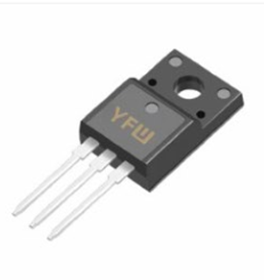Date:2025-05-13 Categories:Product knowledge Hits:239 From:Guangdong Youfeng Microelectronics Co., Ltd
Rectifier diodes are fundamental components in modern electronics, primarily used for converting alternating current (AC) to direct current (DC), a process known as rectification. Understanding their operation requires delving into the physics of semiconductors and the unique properties of the PN junction, the core structure of a diode.
Semiconductor Materials and PN Junction Formation
Rectifier diodes are typically fabricated from semiconductor materials like silicon (Si) or germanium (Ge), with silicon being more prevalent due to its superior thermal stability and lower reverse leakage current. Intrinsic semiconductors, which are pure forms of these materials, have limited conductivity as they contain an equal number of electrons (negative charge carriers) and holes (positive charge carriers created when electrons move, leaving behind a vacancy).
To enhance conductivity,Rectifier diodes。 a process called doping is employed. Doping involves adding impurities to the intrinsic semiconductor. When a pentavalent impurity (with five valence electrons) such as phosphorus is added to silicon, an N-type semiconductor is formed. In N-type semiconductors, electrons become the majority carriers, while holes are the minority carriers. Conversely, when a trivalent impurity (with three valence electrons) like boron is introduced, a P-type semiconductor is created. Here, holes are the majority carriers, and electrons are the minority carriers
When an N-type and a P-type semiconductor are joined, a PN junction is formed. At the junction,Rectifier diodes, a depletion region develops. This region is depleted of mobile charge carriers because electrons from the N-side diffuse into the P-side and recombine with holes, and holes from the P-side move into the N-side and recombine with electrons. As a result, a potential barrier is established across the junction, which prevents further diffusion of charge carriers in the absence of an external voltage.
Unidirectional Conductivity
The most distinctive feature of a Rectifier diodes is its unidirectional conductivity, which stems from the behavior of the PN junction under different biasing conditions.

Previous: Classification, Structure, and Principle of MOSFET
Next: Forward Biasing